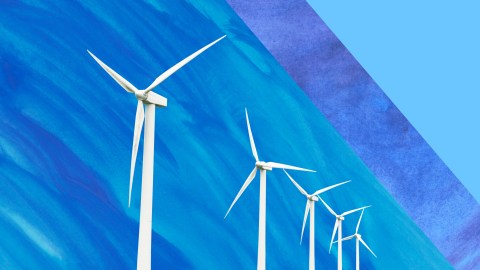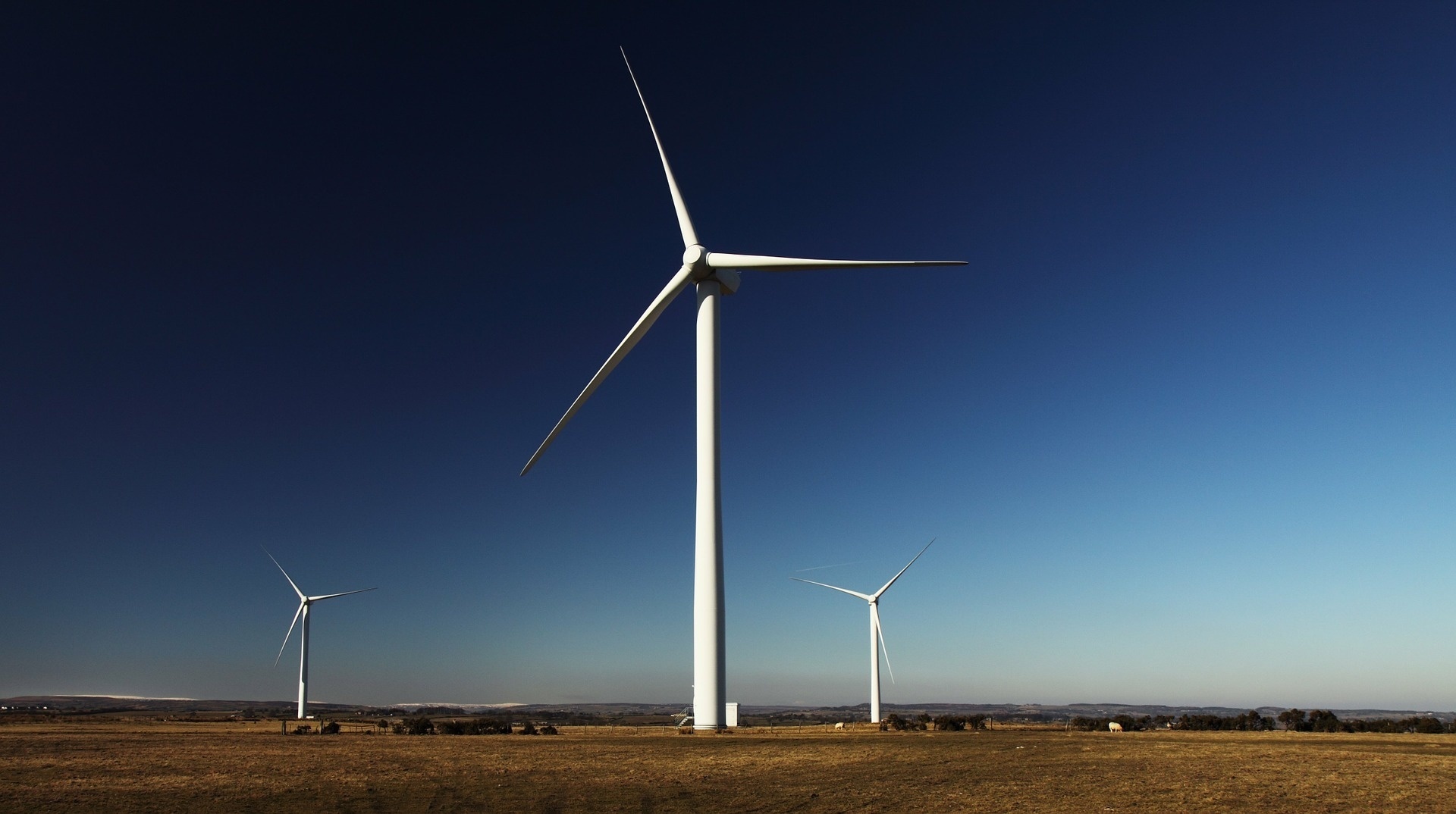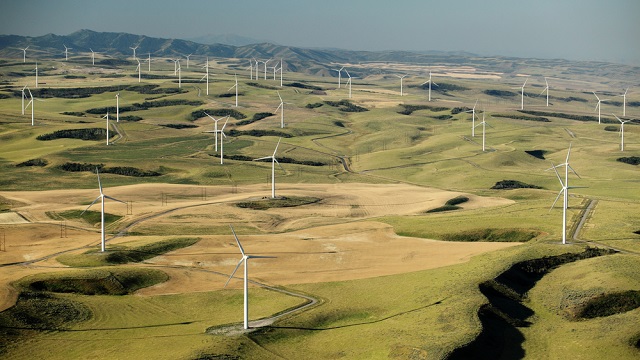How our limited understanding of the atmosphere drags down wind energy

- The flow of the atmosphere over a group of wind turbines causes turbulence that can inject or strip energy from wind turbine farms.
- Understanding this process requires complex computer simulations that treat the atmosphere as a fluid with varying properties.
- Certain conditions with reduced wind at high altitudes can reduce a turbine’s predicted output by as much as 30%.
The wind blows, it hits and turns a propellor, a generator rotates, and energy is extracted. Wind power seems pretty simple. But there’s a major complicating fact: Our atmosphere is fluid. It flows in extraordinarily complicated patterns, like cream in coffee or oil on water, that are nearly impossible to predict.
A recently published research study models the turbulent flow of the atmosphere through an array of wind turbines, demonstrating that certain realistic atmospheric conditions can cause the power output of some turbines to drop by as much as 30% when compared to simpler predictions.
Electrical generation is a game of efficiency, converting a given amount of available natural energy into the greatest possible quantity of electrical energy. Coal, oil, natural gas, and nuclear plants heat and cool water to turn turbines. We understand the straightforward physics of the thermodynamic Rankine cycle that governs this process, allowing us to reliably predict and maximize power plant efficiency to the limits of science and practicality.
Fluid dynamics
Vastly more complex physics is needed to describe our atmosphere. This is the fundamental reason why weather and climate models are so fallible. The atmosphere is an enormous shell of fluid, interacting with itself, the sun, the ground, and the fluid shell of the ocean. Its pressure, density, and temperature vary at all times in every location. The behavior of such a system is described by fluid dynamics.
Fluid dynamics is legitimately hard. Consider that the Einstein field equations, a set of extremely difficult equations that describe gravitation via curvature in the geometry of spacetime, have many known solutions. Meanwhile, the Navier-Stokes equations governing a large portion of fluid dynamics have zero satisfactory solutions for realistic 3D conditions. You can win $1 million right now if you can demonstrate that any solution exists.
While many areas of physics lend themselves to precise solutions, fluid dynamics is a game of predicting approximate behavior patterns, knowing when these break down (quickly, in general), and then turning to computer models. These models approximate the fluid with enough fidelity to stave off chaos for a little while, at the cost of many CPU calculation clock cycles. This is where the recent study comes in. The authors used a supercomputer to model the flow of the atmosphere over a field of wind turbines.
Wind farms are built at locations where there is a band of strong wind just above the Earth’s surface. Their blades reach up into this current, spun by the impact of the streaming air molecules. However, this is only one part of the true atmospheric conditions. There is also an atmospheric pressure gradient that varies with altitude, further altering wind speed at any particular altitude.
We know how the wind turbine field should behave under a simplified model of the atmosphere where the pressure gradients producing atmospheric flow (wind) are the same at all heights. At certain places, at certain times, this may be nearly true. Most of the time though, these gradients vary with altitude in many ways: by location, time of day, weather pattern, ocean current, and time of year.
In the simplified model with no pressure gradients, the smooth band of wind moves horizontally, minimizing swirling turbulence at blade height and in the air above the blades. This produces dueling positive and negative effects. The horizontal flow doesn’t lose momentum in the vertical direction, where it cannot drive the blades. However, it does lose horizontal momentum when it impacts the blade of one propellor, leaving less energy to be extracted if it impacts the blade of the next propellor behind it. A turbulent flow may drag down fresh air from above that contains more forward momentum.
Improving atmospheric models
The more realistic atmospheric wind model adds vertical pressure gradients that disturb the simplified wind band at prop height and decrease wind at higher altitudes. The simulations show that this drives down the velocity of the incoming wind jet and creates turbulence that slows the horizontal flow driving the blades. However, the turbulence doesn’t bring down enough air flow from above the propellors to compensate for the loss in horizontal speed it causes. Thus, including the more complex atmospheric condition has the net effect of lowering the expected output of the modeled wind farm by as much as 30%.
This research examines only a few cases of possible atmospheric conditions. These are still simplified far beyond our real atmosphere. It broadly demonstrates that our understanding of how to efficiently extract power from the atmosphere is far more limited than our understanding of how to do so from fossil and nuclear fuels. Wind farms may produce less power than we expect for all kinds of reasons that can’t be revealed by our simplified modeling of atmospheric fluid dynamics.





